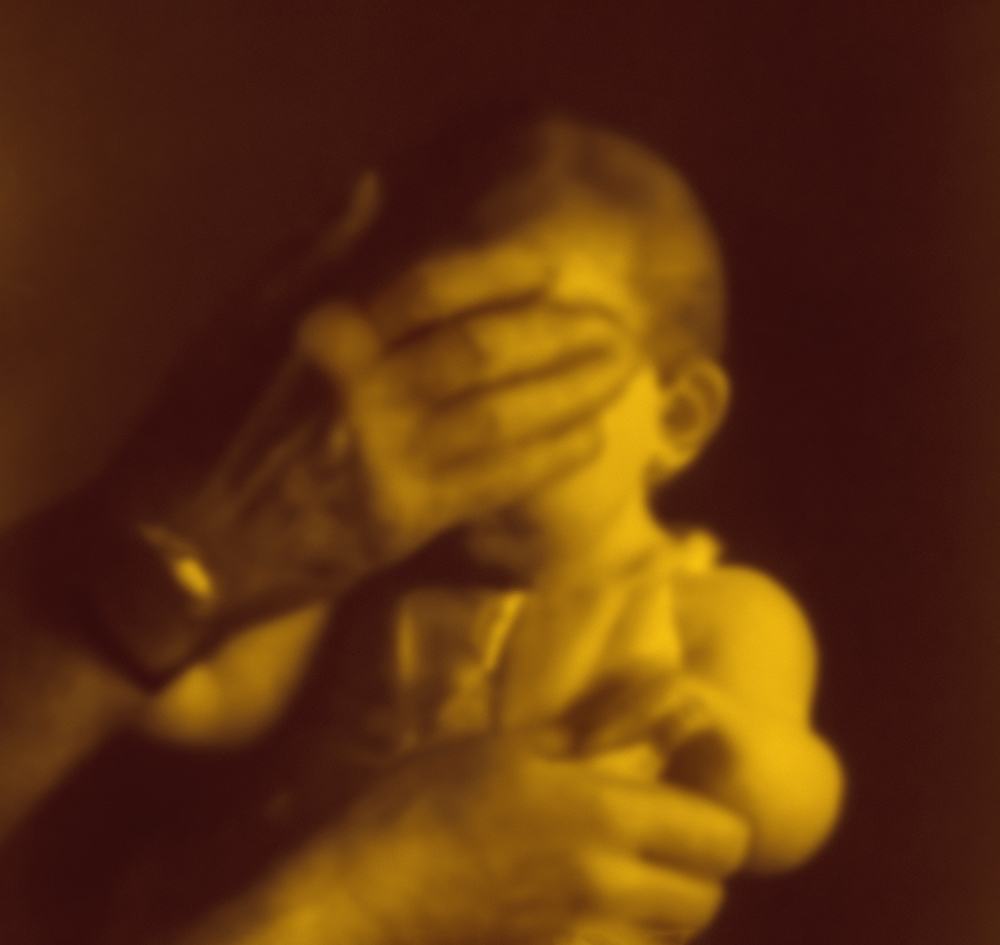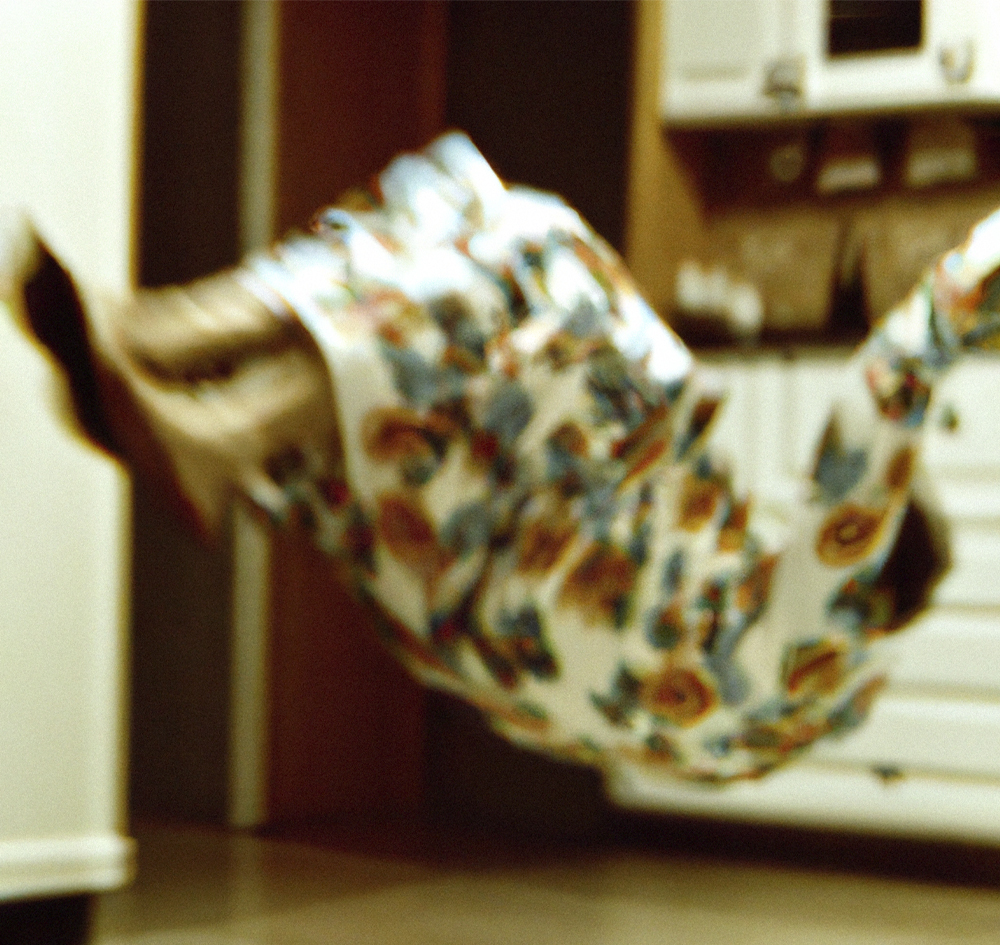MoP Denver: Todd Herman: Sanctuary

© TODD EDWARD HERMAN SANCTUARY-05 2023
Elegiac Conduits: The Photography of Todd Edward Herman’s Sancutary
To enter photographer and filmmaker Todd Edward Herman’s newest work, Sanctuary, is to step into a world at once known and imagined, a world simultaneous in its intimacy and its surrealism. Perhaps this is the world we know exists beside us in daily life but are afraid to look directly at. Or perhaps this is the world that exists only at the periphery of our vision line—the blips of strange ephemera we double-take and convince ourselves were nothing but tricks of our eyes.
In my attempts to write about these photos, I am left grasping at words that feel inept, incapable. Maybe because the images feel so familiar, like a pinhole burrowed straight into the oblong of my sternum. Or maybe because they feel like the antithesis of familiarity, similar to the lurching uneasiness I feel in my stomach when I watch the serpentine movements of a snake skittering across a surface. I read once that people’s fear of snakes is actually their human mind’s inability to comprehend such undulant slithering as a possible form of motion. And I am thinking of that as I look at the photos before me. Which is not to say the works of Sanctuary scare me, but they do bring my attention to notions my brain struggles to accept. Or to put another way: these are the images of a grief made visible. Of touching against the unavoidable mortality carried within ourselves, and, even worse, within the ones we love most.

© TODD EDWARD HERMAN SANCTUARY-04 2023
Even without context, it is clear that Sanctuary is an elegy. The color tones of the photos—in full spectrum within a forthcoming book and in more compressed palettes for these springtime shows—range from the vintage earthy palette of optimistic 70s homemaking, through the twilight-cast indigo of a day approaching conclusion, to the sulfuric yellow of a memory being etched forever onto a heart. These are colors that stretch across the experience of what it is to be in mourning: sometimes comforted by all that has been, other times burned by the pain of what no longer (never again) exists. And all the interstitial hash marks in between.

© TODD EDWARD HERMAN SANCTUARY-01 2023
Todd began this project as he listened to his mother describe a childhood memory of witnessing her father cowered in pain, ravaged by a cancer that would kill him only days later. (The image inspired by this memory serves as the opening point for the Armory show.) This poignant memory stuck with her for the rest of her life with such clarity that, even within the last years of her life, she could still recall enough detail to create a hand drawn sketch of it. In the act of relaying her memory, it transferred onto Todd’s psyche, and now, through the translation of photography, onto our own. But isn’t that what memory is, in some sense? Details that transfix themselves onto us, which we split and share between each other with the intimacy of gift-giving or disease spreading.
These photos serve as the meeting point of witnessing someone you love at the end of their life and the domestic rituals of concern and care we perform in the aftermath—an attempt to reshape the gaping absence their passing leaves. Stripping the deathbed of the sweat-soaked sheets. Wiping their smudged fingerprints from the last glass they held. How we create and maintain an organized home as a container for, and perhaps a barrier against, aching loss. Or as Todd so beautifully puts it, “A complicated form of coping, as well as erasure.”

© TODD EDWARD HERMAN SANCTUARY-09 2023
Thematically, the domestic hums insistent in all of the photos. Many occur within home settings, most prominently the kitchen (that ever-traditional mother’s space). The figures hover or are thrashed about in their housecoats and pajamas. This is an upending of the familiar, worn, and comfortable. This is an invasion of private space. Even those photos occurring outside the home ring with the inherent safety of domesticity, albeit via their splintering it apart. Feral children tearing at all that they’ve been told is solid, infallible. Notice what happens when you look between these two points, seemingly at odds with each other. The safety of a mother’s home. The safety of untamed possibility proliferating outward. These things are not opposites; this framework is not binary. We are presented with divergent truths as a place for memories (be they personal, shared, inherited, counter to the accepted mainstream narrative) to meet and determine what (or whether) the story may be.

© TODD EDWARD HERMAN SANCTUARY-07 2023
There is a suturing together or layering quality to the photos reminiscent of cut-up or collage work. A micro and macro compounding, the personal overlaid with the collective, or vice versa. But here the seams joining together are more felt than seen in the actual materials. This is more the experience of running your hand across the underside of a hand-sewn garment. What looks like a solid piece of fabric revealed to be patchwork. The tenderness of knowing the stitch patterns that create an object. In part, this composite sensation comes from the use of AI-sourced imagery in conversation with newly created or archival family photographs. By pressing into the algorithm, by overlapping technologies and images from widely different time periods, Todd facilitates linear time folding in on itself. We are able to look into a wormhole of what was, has always been, could never be, without the restriction of imposed chronology.

© TODD EDWARD HERMAN SANCTUARY-03 2023
However, it must be stated that this is not the work of an AI artist, nor was it created from pro-AI standpoint. Instead, this is the work of a longtime art-maker looking with curiosity, and a healthy dose of criticism, into a tool that is infiltrating the creative consciousness right now, for better or worse. Todd explains his work with AI in this project as “foregrounding, in a cautionary way, how this method of working may suggest obsolescences of creative, authorial, and economic frameworks. The depicted memories are also conduits to talk about the construction, consumption, and manipulation of truth/revisionism/historical negation that this method of image-making easily allows. So this was my entry point to a highly disdained, disrespected, and untrustworthy potential collaborator. I agree with every informed admonition of this beast yet still feel compelled to find something in it that takes us out of its harm’s way.”

© TODD EDWARD HERMAN SANCTUARY-10 2023
Through his investigations, and the resulting images, necessary questions bubble up around the biases and complications inherent in the archive and the database. We can look at what happens when choices are made without our input or consent (something we all know too well), and the reactions we may feel called to craft in response. We can investigate how random chance might destabilize a notion or image, and what could potentially bloom at the site of that destabilization. It also calls forth the influence of Judith Butler’s mourning as a political act.

© TODD EDWARD HERMAN SANCTUARY-06 2023
Sanctuary accomplishes all this, and more yet to be articulated. These photographs contain a language that speaks to anyone who has experienced the comfort and the heartbreak of domestication. Anyone who has an urge to press into the bruise of their own complacency. Anyone who holds the tender nodes of grief just beneath their skin’s surface. That is to say: it speaks to all of us. As I contemplate the potential bourgeoning within this work, I am called to paraphrase something the writer Selah Saterstrom once said: may these images survive the apocalypse. I mean the apocalypse that we each individually weather with constancy and the collective apocalypse we are potentially watching unfold in real time. May these images usher in a chorus of counter narrative. May these images serve as archive for the complex unbelievability that is being a human, in a body, of these times.

© TODD EDWARD HERMAN SANCTUARY-02 2023
S A N C T U A R Y
“At their best artists can question habits of understanding, looking, and storytelling; investigating how personal and historical forms are constructed rather than fixed. For me, this means finding new ways to generate work that examines how images compose, enforce, or undermine — rather than simply reflect — ideas of history, dominant values, authenticity and authorship.”— Todd Edward Herman
The photographs in this exhibit are excerpts from my forthcoming book SANCTUARY, which focuses on themes of social conformity, domestic confinement and bereavement.
Sourced from photos made by myself, family members, and culled from the surfeit of imagery found in AI databases, the images in SANCTUARY are sometimes theatrical and absurd, while at the same time appearing to be observational. Each photograph reenacts an unpictured or imagined moment from a childhood filtered through archives of familial relation and photographic convention. Each reenactment of a personal history suggests that of a shared or collective one.
The organizing principles of this work are often contradictory, revising my own memories, perhaps adding a layer of previously unexpressed emotion to them, while upending the very methods of my revision. As auto-ethnography, these images push the limits of their own credibility, falsely insinuating the position of a photographer who is never entirely present as either subject or author, while still alluding to a long list of feelings and understandings and stories of affiliation and conflict that are not completely fictional.
I hope that in some way viewers can join in my appreciation of this.—Todd Edward Herman

© TODD EDWARD HERMAN SANCTUARY-08 2023
Todd Edward Herman is a visual artist and curator. Throughout his career, Herman has collaborated with artists on books, films, performances and exhibitions all over the world. He is also the founding director of East Window Gallery and co-founder of Sins Invalid.
Todd has been the recipient of many awards for his work including the San Francisco International Film Festival’s New Vision Award, the Art Council of Northern Ireland’s Artist in Residence Award, Grants from the San Francisco Film Arts Foundation, the Boulder Colorado Arts Commission, a Western States Regional Media Arts Fellowship, Taipei Artist Village Residency, and the San Francisco Art Commission’s Emerging Curator Award.
He has presented his work at such venues as RedLine Contemporary Art Center, The International Film Festival Rotterdam, San Francisco International Film Festival, Southbank Centre, Anthology Film Archives, San Francisco Cinematheque, and Pacific Film Archives.
Follow him on Instagram: @toddedwardherman
SANCTUARY will show at the following locations:
The Digital Armory | March 11–April 6, 2023
Mercury Framing | April 1–June 30, 2023
Opening reception Friday, April 14, 6–8 pm
Posts on Lenscratch may not be reproduced without the permission of the Lenscratch staff and the photographer.
Recommended
-
Ragne Kristine Sigmond: Portraits of Painterly LightDecember 2nd, 2025
-
Mary Pat Reeve: Illuminating the NightDecember 1st, 2025
-
Ricardo Miguel Hernández: When the memory turns to dust and Beyond PainNovember 28th, 2025
-
Pamela Landau Connolly: Columbus DriveNovember 26th, 2025
-
MATERNAL LEGACIES: OUR MOTHERS OURSELVES EXHIBITIONNovember 20th, 2025
























































